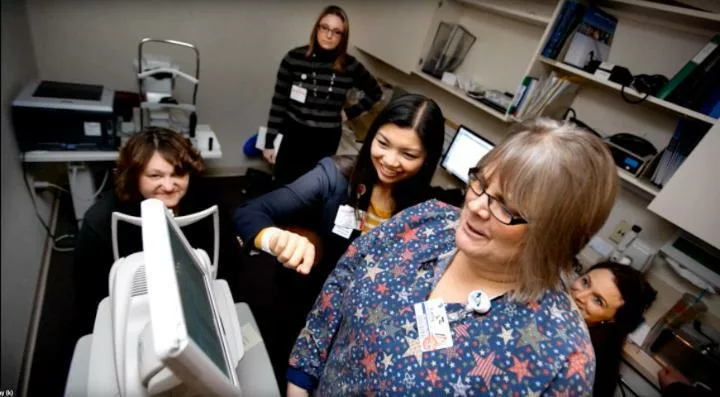New study seeks to expand eye screenings for rural diabetic patients throughout the United States
More patients in rural areas across the nation could have increased access to vision-saving eye screenings through a new clinical trial led by researchers at the University of Wisconsin School of Medicine and Public Health.
The National Eye Institute, part of the National Institutes of Health, has awarded the school $4.4 million to increase diabetic eye screenings in rural communities in Wisconsin and beyond using teleophthalmology, or remote eye screenings. The new multicenter clinical trial, Implementation of Teleophthalmology in Rural Health Systems (I-TRUST), will be led by Yao Liu, MD, MS, ophthalmologist, director of the UW Health Teleophthalmology Program, and assistant professor of ophthalmology and visual sciences at the UW School of Medicine and Public Health.
Yearly eye screening is recommended by the American Diabetes Association, as early diagnosis and treatment decreases the risk of severe vision loss from diabetic eye disease by more than 90%. However, data shows that only about half of the 34 million Americans with diabetes currently receive yearly eye screenings. Rates are particularly low in rural areas, Liu said.
“Because patients often have no symptoms until very late in the disease, we tend to see patients with diabetic eye disease at a point where we’ve lost a critical opportunity to intervene earlier,” she said. “Regular eye screening and early treatment makes it much more likely that we can prevent blindness from diabetes, preserving a patient’s vision.”
To combat this, in 2015, Liu launched the UW Teleophthalmology Program so patients with diabetes at Mile Bluff Medical Center in rural Mauston could have photos of the back of their eyes, or retinas, taken with a camera. The digital images are sent securely to a UW Health eye specialist in Madison, who reviews them for early signs of damage. This allows early detection and intervention to prevent the disease from progressing to blindness.

However, establishing effective teleophthalmology programs that remain successful over time continues to be a challenge, Liu said.
To address this, she developed the Implementation for Sustained Impact in Teleophthalmology (I-SITE) program in 2017 in partnership with Mile Bluff Medical Center. This program was the first to be specifically designed to overcome barriers to teleophthalmology use by tailoring its integration into rural primary care clinics. In I-SITE, a trained coach works with the primary care clinic to better integrate and increase the use of this technology. The systematic approach included monitoring its successful impact (i.e., increasing eye screenings), which was notable. At Mile Bluff Medical Center, there was a 35% increase over a three-year period in diabetic eye screenings, a clinically significant, sustained improvement that placed it in the top 25% of health systems nationwide for diabetic eye screening rates, according to Liu.
Building on that success, Liu and her team aim to enroll eight to 10 rural health systems across the United States in I-TRUST to help improve the integration of teleophthalmology eye screening programs into primary care clinics serving rural patients living with diabetes.
Now, with the launch of I-TRUST, Liu hopes to learn more about what factors might predict the effectiveness of the I-SITE program, such as differences in the characteristics of individual health systems and clinics in different regions of the country, she said.
Knowledge gained from the I-TRUST study could also be important for building more teleophthalmology programs in other areas where similar screening challenges exist, such as in urban underserved communities.
“With the I-TRUST study, we’re building upon our unique expertise in diabetic eye disease and implementation science to benefit rural communities here in the U.S. and around the world,” Liu said. “It’s really a great example of how research from the University can improve the lives of people throughout the state and beyond, which is the Wisconsin Idea in action.”